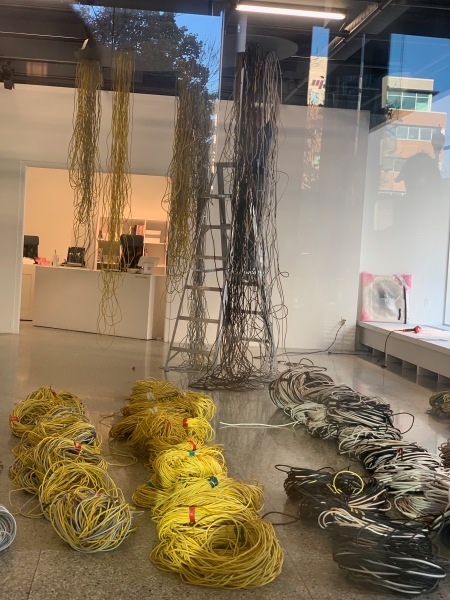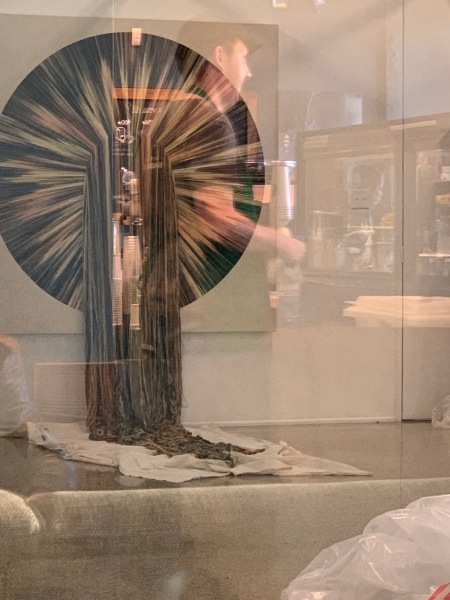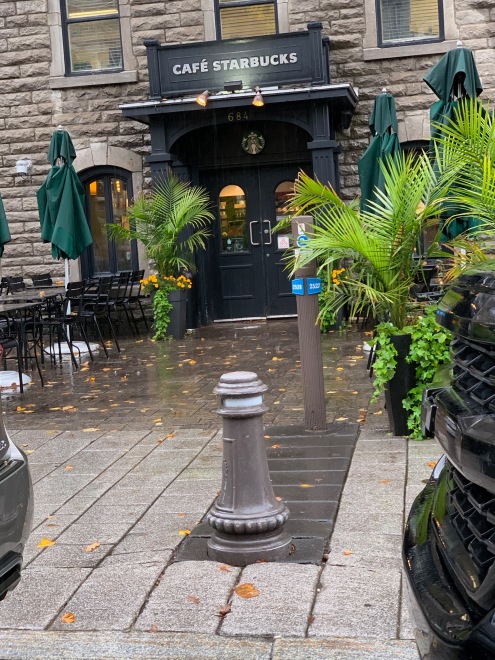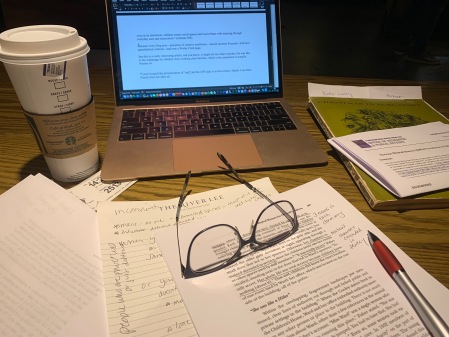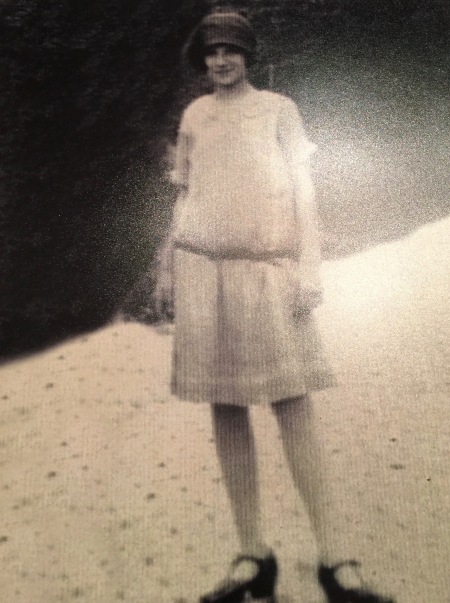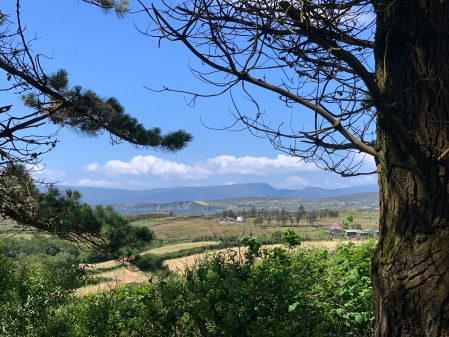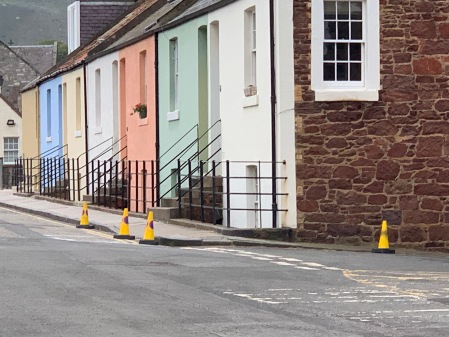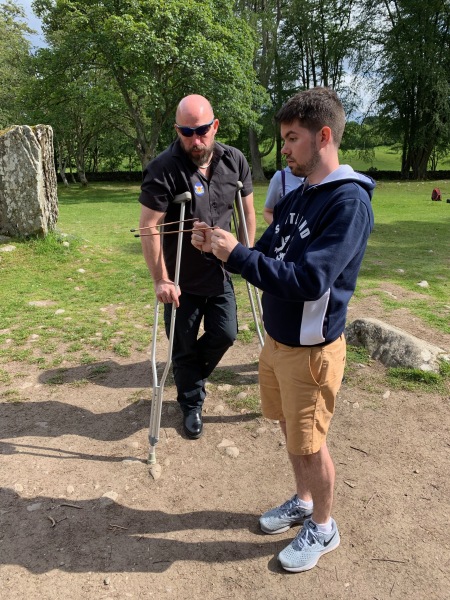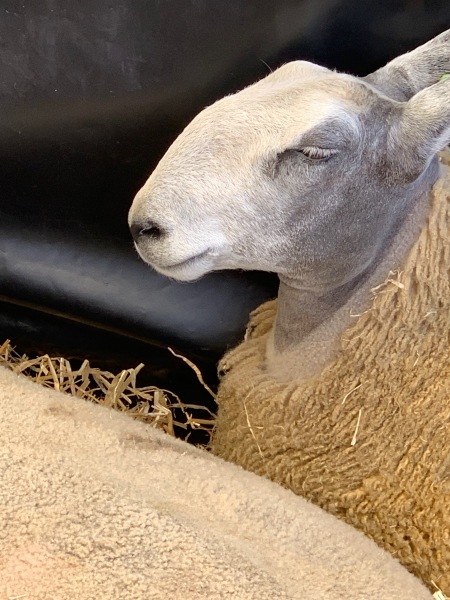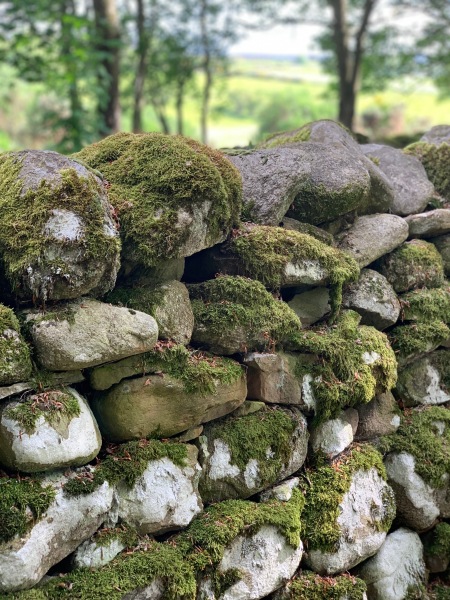Volume 1: The Port Jeff-Bridgeport Ferry
Friday morning, September 6, getting ready to leave
Here is what I’m anxious about:
The ferry people jam as many cars as they can on to the ferry, so close that you have to get out of your car before the next row of cars comes in, which often results, at the end of the trip, in passengers not being able to walk through the rows to get back to their cars until they start unloading. One time, I was slow getting out of my car (kind of on purpose) and the car next to me pulled up so close that I couldn’t open my door at all. So I stayed in the car. Which you’re generally not allowed to do. I’m not above scrunching down and hiding again, but I can’t trust the girls to keep quiet, unless they are frightened into silence (and I’m pretty sure that’s not a thing).
Which is the next thing I’m anxious about. What if Scout:
A: shakes violently like she does when there is a thunderstorm, and I have to freak out and stare at her nonstop and take her pulse and make soothing noises to make sure she doesn’t have a stroke from all the shaking and the fear, for the full 90 minutes on the ferry?
B. gets scared of something on deck, squeezes under the railing, throws herself into the sound and sinks like a rock?
C. bites the ankles of anyone who has their back to her? (It’s happened. It’s a good thing the landscapers wear those heavy work boots. The vet says it’s a herding dog thing but I don’t think the landscapers care what kind of dog she is.)
D. won’t jump out of the car because I can’t open the door all the way (see paragraph #1) and she refuses to jump if she doesn’t have a lot of room?
E. won’t jump back into the car (see D above)?
F. stays perfectly calm but snags someone’s hotdog right out of their hand as they walk by? (She perfected that move when my dad was still alive and he’d get distracted while he was eating.)
And, what if we cause so much trouble that they make us get off the ferry? And what if we’re in the middle of the ferry, and like, 30 people have to move their cars to let us off?
What if Scout is fine and DILL does any or all of the above?
I think I’m spiraling.
Tuesday, September 10, on the other side of the Sound, and the border
So none of the things I was panicking about with the ferry happened. Instead, fate being what it is, completely unexpected, different things happened. These include:
- Swells so big that when we stood up to move inside, we bounced like ping pong balls between the railing on the deck and the door to the stairs.
- Swells so big that when we got back to the door to the stairs, and I got it open and us inside, the door shut on Scout’s tail. Not all the way, and I opened it quickly, but still. Now she’s afraid of doors. She’s a sensitive little soul.
- The rest of the crossing spent in the bar, sitting under a sign that said, “No pets inside the cabin,” and when one of the crew glanced over at us, I said, “Dude there is no way I’m using those stairs again,” and he left us alone.
- Dill totally distracted by crumbs on the floor that were just out of her reach the entire trip. And making puppy-crying noises in frustration.
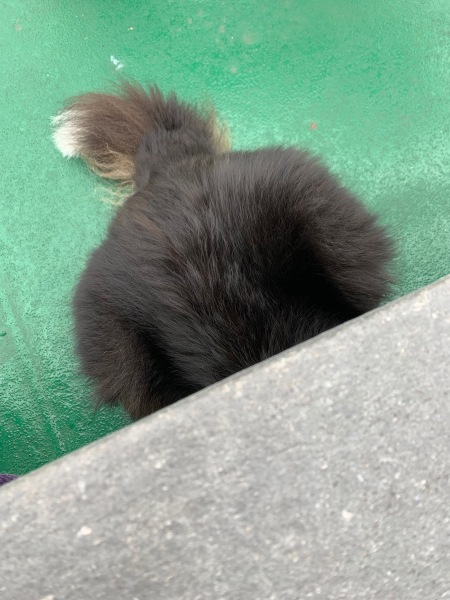
Scout enjoying the ferry ride
And now we’re in Quebec. Viola!
Not so fast.
First we stopped for the night in New Hampshire, where I woke up every hour to look out the window and make sure the stuff on the roof of the car was still on the roof of the car, having decided this was a better option than taking the stuff from the roof of the car inside.
Then, on Saturday, we crossed the border.
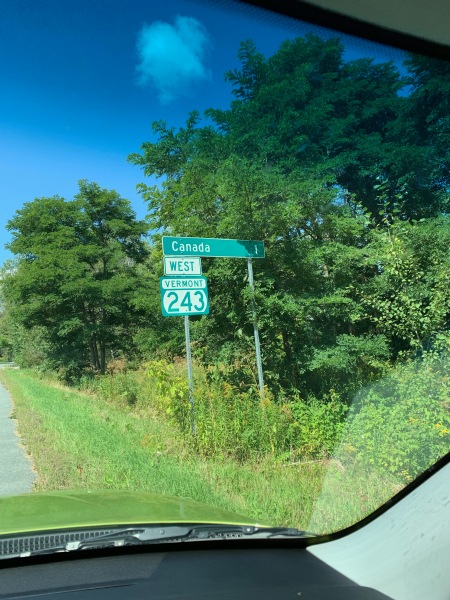
And immediately stopped in the Eastern Townships of Quebec for some Louise Penny sightseeing, which I have documented on FB, Insta and Twitter, so I’ll spare you, except: Read the books!
Speaking of which: one of the Louise Penny books (Bury Your Dead*) takes place in Quebec City, and in it, Armand Gamache, the character who is in charge of Homicide for the Surete de Quebec (can’t wait to find out how to pronounce that–it has accent marks that MS Word does not care to include), often goes for walks on the Plains of Abraham. Sounds like a cool place, right? Kind of biblical. I knew from looking at maps that it’s right above us, as in, if you climbed a few thousand feet up the sheer rock face visible through my shower at the back of our house, you’d be there. So I drove. (I’ll explain about the shower later.)
And it was a big grassy field with a few cannons. I don’t mean to diss the Canadians, or the Quebecois, but I was not impressed. Yes, Ugly American. The Plains of Abraham is a sight of considerable historical significance. And yeah, I guess historic battles generally take place on big grassy fields. But I expected something more. I mean, call it a battlefield if that’s what it is. Don’t give it some imagination-provoking-Bible-alluding name and expect me not to be disappointed when I get there.
Although now that I think about it, it was probably named the Plains of Abraham before the battle. Maybe I need to Wikipedia that.
Anyway, we’ve been here for three days now, and I love it. The city is gawgeous (she said, with no trace of a Lawn-guy-land accent) and I’ve walked the dogs through a big chunk of it. Everyone wants to pet them (except that guy on the skateboard, whose ankles Scout tried to nip), and talks to them in French, while I smile and nod. You know at least one person said, “Are these vicious, child-mauling dogs?” in French, and I smiled and nodded.
Tip: do not wear a t-shirt and shorts with no pockets and attempt to manage a phone, a water bottle, cash and some change, along with two leashes, at the end of which are two dogs going in opposing directions, with just your two hands. Especially watch the dog on the extendable leash, who might squeeze through the crowd and cut to the front of the line when you’re not looking, and board the funicular without you.
And I’ve done some writing. You know, sabbatical and all. Mostly I spend the mornings writing, the afternoons out doing something, and then the evenings reading, researching, etc. All of this book-ended by walks with dogs along the St. Lawrence River. (Privilege in action.) Tomorrow I’m going to check out the Québec Literary and Historical Society, where Gamache (remember Gamache?) investigates when a body is found in the cellar. The building it’s in, with its collection of 20,000 rare books in English, was a jail—horrible conditions, closed in 1867—and then a college (that admitted women when that wasn’t cool) and is now a library. I really like that trajectory.
Which brings me back to Letchworth, which I am presently writing about, and not letting a lack of information stop me: wouldn’t it be nice if Letchworth and its horrible history someday became a library housing rare books, and there was a murder in the basement? I think that’s kind of how the world is supposed to progress, yes? Instead I live in fear of coming home to Gilead in December. Someone will tell me, right? I mean, so I can just stay here and be a refugee.
*Of course I’m rereading Bury Your Dead. Did you even have to ask?

